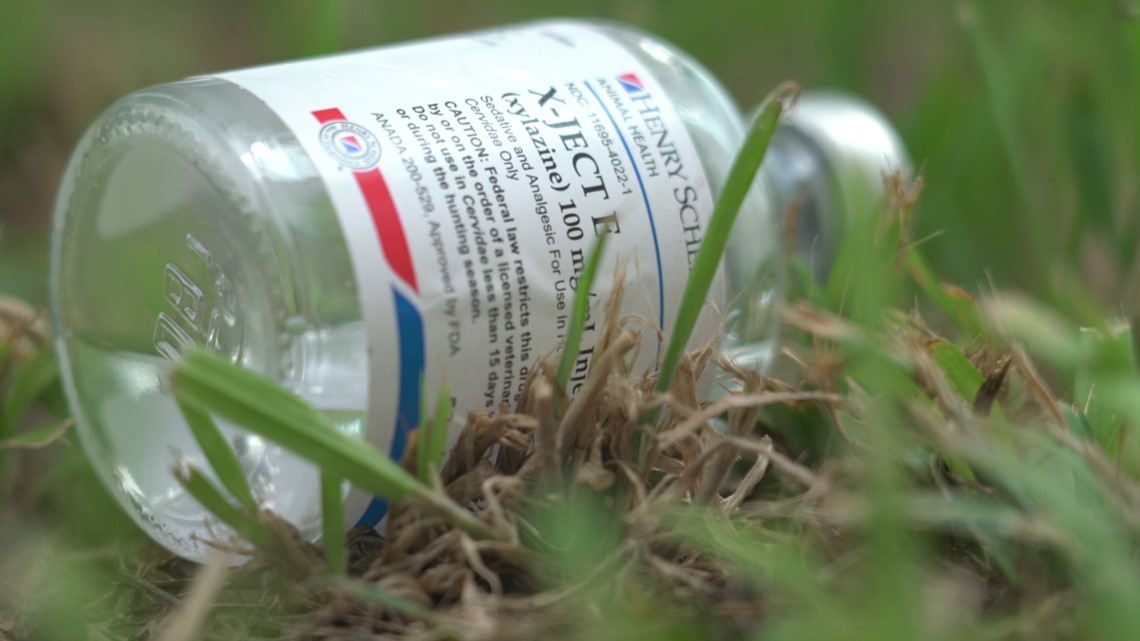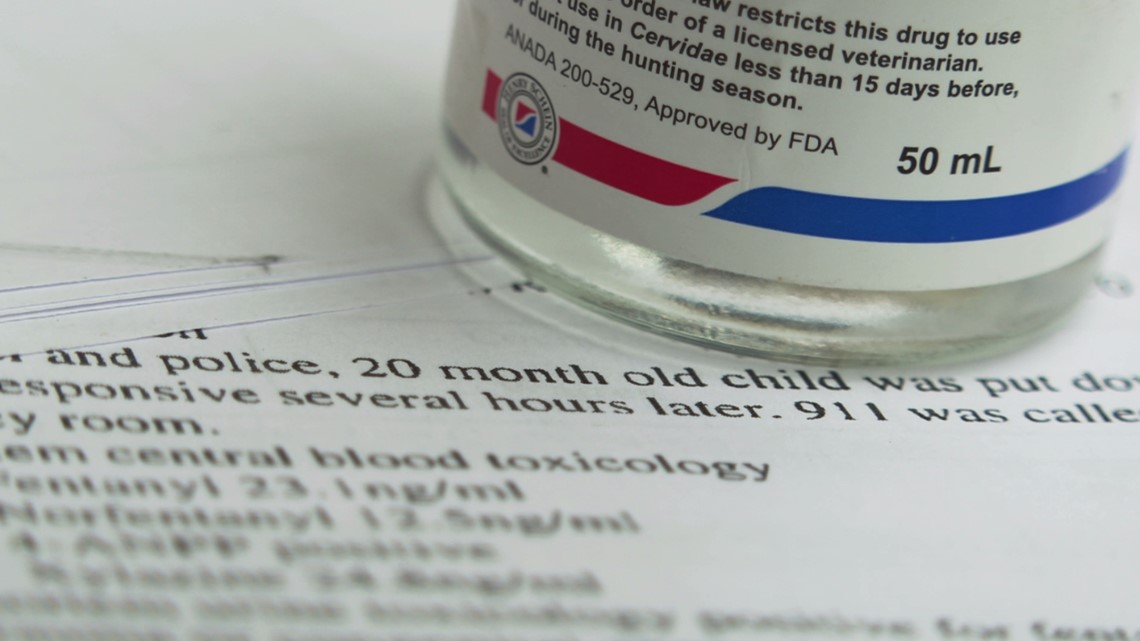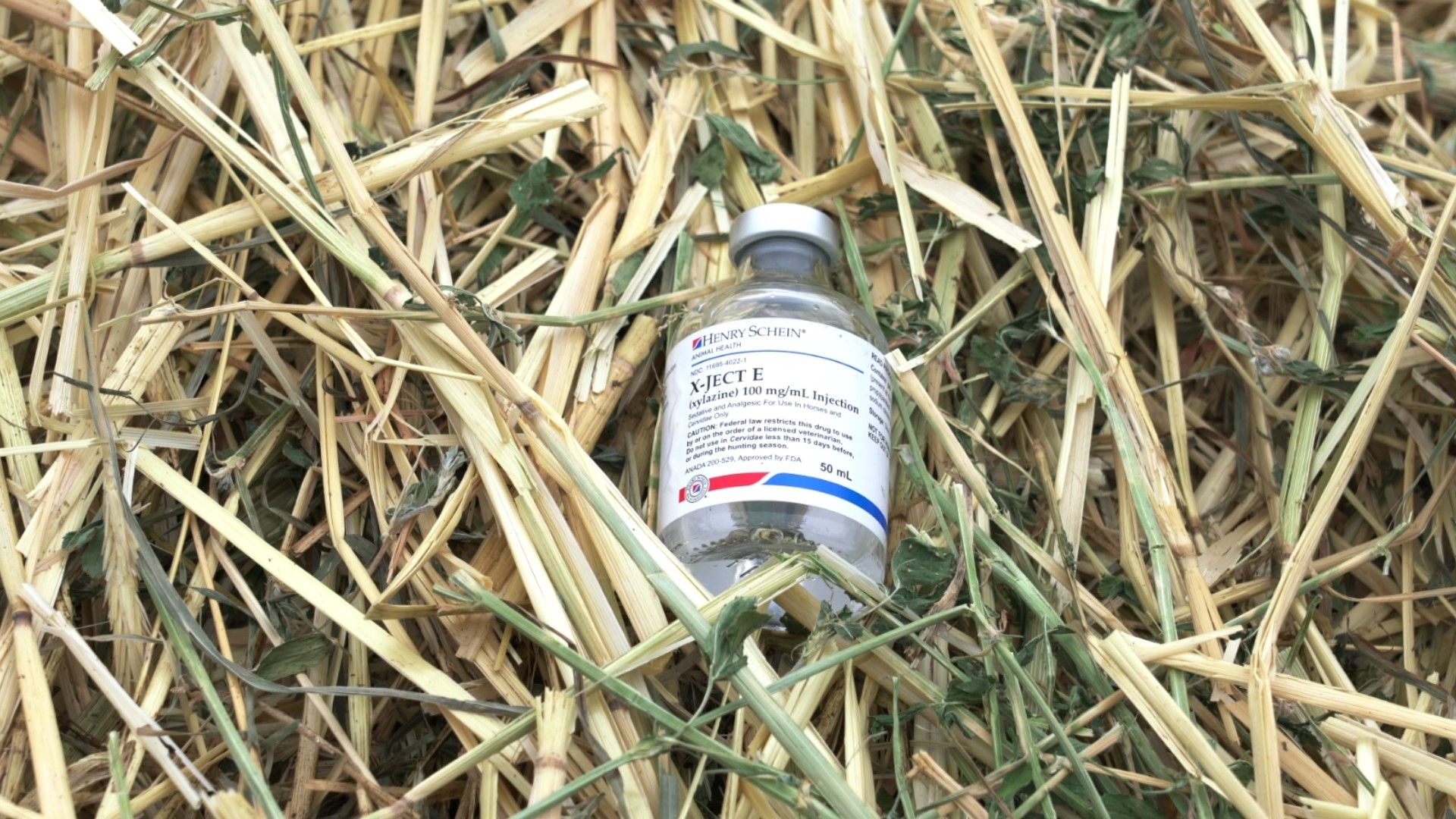KENTUCKY, USA — As opioid addiction grew in the country, Kentucky became one of the epicenters for the crisis.
The Louisville-based Kentucky Harm Reduction Coalition (KHRC) has seen that firsthand, and getting people help has become even more problematic.
As fentanyl already made heroin more potent, more addictive and ultimately more deadly, a horse tranquilizer is now showing up more and more in the drug supply.
It’s called xylazine.


“It’s a horrible thing to combine with what’s already horrible,” KHRC Co-Director Dr. James Murphy said. “Opioids kill you basically by making you stop breathing, xylazine can also kill you by lowering your blood pressure.”
The tranquilizer can also cause terrible skin soars, including necrosis – the rotting of human tissue – which may require amputation.
The administrator for the U.S. Drug Enforcement Administration (DEA), Anne Milgram, previously stated, “Xylazine is making the deadliest drug threat our country has ever faced, fentanyl, even deadlier.”
In large part, that’s because naloxone or Narcan is ineffective against xylazine.
Although the DEA previously stated it seized xylazine and fentanyl mixtures in 48 states, Kentucky has still not made xylazine part of the standard toxicology panel in deadly overdoses.
In fact, the state’s Justice & Public Safety Cabinet says the Office of the State Medical Examiner (OSME) only tests for xylazine if it suspects the tranquilizer, or has been made aware that the tranquilizer, was mixed in with the drugs in a deadly overdose.
Therefore, xylazine has only been detected in eight autopsies.


That includes the toxicology taken from a 20 month old in November 2022.
The child, Bowling Green Police believe, ingested xylazine after finding drugs in her mother’s boyfriend’s backpack.
FOCUS initially reached out to the Justice & Public Safety Cabinet at the beginning of the year, requesting an interview with Chief Medical Examiner Dr. Bill Ralston.
Instead, on Jan. 27, spokesperson Morgan Hall addressed the questions in an email.
According to the State Medical Examiner’s database, as of Jan. 1, 2022, there has been 3 cases involving xylazine. This drug is not routinely tested. It is tested within the third most commonly used toxicology panel. Since Jan.1, 2022, this panel, which includes a host of different drugs, was tested 179 times and was confirmed only three times.
The Office of Drug Control Policy states that this drug has not infiltrated Kentucky yet. While it has shown up in a small number of cases it is not widespread. ODCP and OSME are working closely with other state agencies on potential responses and will continue to track closely.


Then, on May 25, Hall acknowledged more testing for xylazine had been conducted.
Out of 445 tested cases there were eight overdose drug deaths that included Xylazine among other drugs. The Office of the State Medical Examiner (OSME) received grant funding to pay for Xylazine to be added to the standard testing panel for the first 400 approximate cases to help Kentucky determine its prevalence. Since there was only a 1.8% positivity rate and the high expense associated with testing for this drug, OSME has determined it would not be a good use of taxpayer money to add this drug permanently to the standard drug panel.
OSME is in constant communication with the state’s toxicology vendor and Office of Drug Control Policy to adjust the standard testing panel as needed.
Murphy argued Kentucky is not isolated from the growing problem.
“It’s gotten to other parts of the country, and certainly it’s gotten to Kentucky and definitely in our neighborhoods,” he said. “If you don’t test for something, you can’t find it, so again, I don’t know why they’ve only found it eight times, but I can tell you there’s no way it’s not prevalent.”
As Kentucky concluded that xylazine has “not infiltrated” the state yet and the $50 cost to permanently add the drug to each test panel “would not be a good use of taxpayer money,” neighboring Indiana is paying much more attention.
In fact, as of July 1, a new law required coroners throughout Indiana to test for xylazine in all suspected overdose deaths.
Statewide data shows the problem is growing.
Between January 2020 to July 2023, according to the Indiana Department of Health, 349 people have overdosed and died with xylazine detected in their system.
By the numbers:
- 47 decedents in 2020
- 120 decedents in 2021
- 118 decedents in 2022
- 64 decedents by July of 2023
The percentages of xylazine cases in total overdose deaths have increased from year to year since 2020.
- In 2020 there were a total of 2,316 overdoses deaths, 2.03% had xylazine present at time of death.
- In 2021 there were a total of 2,812 overdoses deaths, 4.27% had xylazine present at time of death.
- In 2022 there were a total of 2,250 overdoses deaths, 5.24% had xylazine present at time of death. (Provisional data)
- In 2023 a total of 509 overdoses deaths were reported through Quarter 1, with 12.57% having xylazine present at time of death. (Provisional data)
***Data through 2023 can change with new results that are received from coroners.
Clark County Health Officer Dr. Eric Yazel said xylazine had already been tested for prior to the new law.
“We did have five in our county last year, and that’s five out of somewhere around 50 overdoses,” he said. “It’s (testing) a big deal and something that we need to monitor very carefully.”
Make it easy to keep up-to-date with more stories like this. Download the WHAS11 News app now. For Apple or Android users.
Have a news tip? Email assign@whas11.com, visit our Facebook page or Twitter feed.

